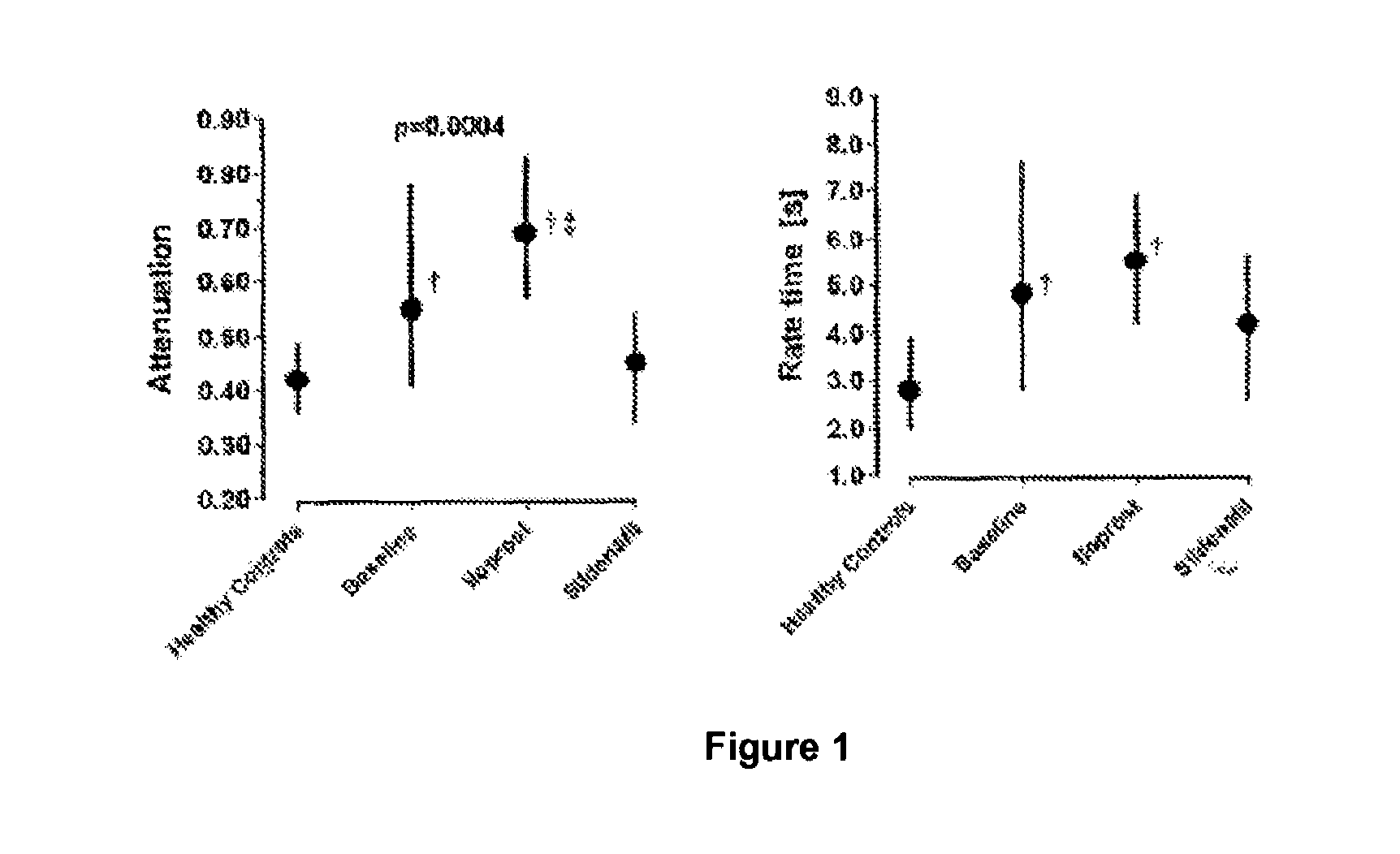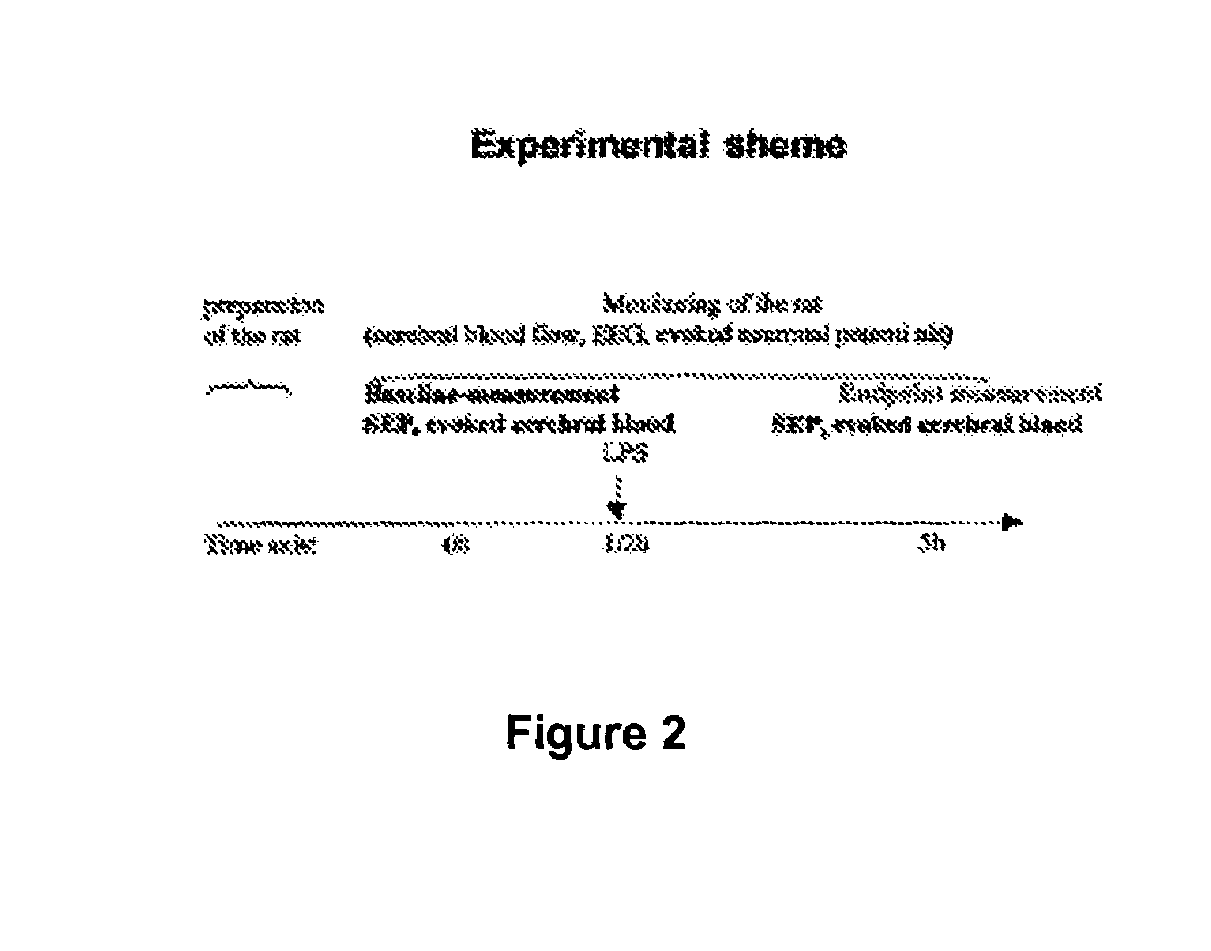Use for PDE5 inhibitors
a technology of phosphodiesterase and inhibitors, applied in the field of phosphodiesterase5 inhibitors, can solve the problems of limited treatment of such patients
- Summary
- Abstract
- Description
- Claims
- Application Information
AI Technical Summary
Benefits of technology
Problems solved by technology
Method used
Image
Examples
example 1
New Pharmacological Mode of Action of PDE5 Inhibitors
[0049]It has been shown—contrary to the skilled person's expectation, that the vasodilating effect achieved with a PDE5 inhibitor extends to the improvement of the kinetics in blood flow changes upon stimulation of the cortex by utilizing a visual stimulation paradigm. This could be shown by using the doppler-ultrasound technology which can measure the heart-beat dependent pulsatile blood flow within the basale cerebral vasculature with very high resolution. With a standard visual stimulation the Doppler is able by insonate the posterior cerebral artery to measure the activity-dependent blood-flow-regulation. [Rosengarten et al. (2001) Neurovascular coupling in terms of a control system: validation of a second-order linear system model. Ultrasound Med Biol. 27: 631-5; Babikian et al. (2000) Transcranial Doppler ultrasonography: year 2000 update. J Neuroimaging 10: 101-115]
example 2
PDE5 Inhibitor for the Treatment of Primary and Secondary Pulmonary Hypertension
[0050]A pharmaceutical preparation comprising a PDE5 inhibitor can be used to treat patients with primary and secondary pulmonary hypertension. This patients suffer, as our studies with 11 primary pulmonary hypertension patients (diagnosed by chest x-ray, lung function testing, echocardiography, CT-scan of the lung, clinical chemistry, immunological analysis) for the first time clearly demonstrate, from an impairment in the demand-dependent modulation of cerebral blood flow as shown by visual stimulation of the cortex and simultaneous Doppler ultrasound measurements. The hemodynamics aspects of the cerebral blood flow modulation can be described by a mathematical model (see Rosengarten et al., Headache 2003; 43: 458-463). This cited model contains a parameter T which defines the initial fast responding properties of the blood flow upon visual stimulation and three parameters (K, ζ and ω) which define the...
example 3
PDE5 Inhibitor for the Treatment of Septic Encephalopathy
[0053]To validate the use of PDE5-inhibitors in the treatment of this disease associated pathophysiology, we use anasthetized rats, which are initially catheterized and artificial respirated. Modulation of the cerebral blood flow evoked by repetitive electrical stimulation of the sole of one foot of the rats is measured by Doppler ultrasound technology as well as the sensoric evoked neuronal potentials (SEPs) by EEG. Baseline measurements are performed before application of LPS to the rats to induce sepsis. 4½ h after inducing sepsis the same parameters (SEP, evoked blood flow) are measured (for the experimental scheme see FIG. 2). LPS induces strong changes in the shape and amplitude of the SEP. Simultaneously the blood flow in the region of the activated neurons is strongly reduced. Surprisingly administration of sildenafil greatly restores the amplitude of the SEP as well as the stimulus induced cerebral blood flow (see FIG...
PUM
| Property | Measurement | Unit |
|---|---|---|
| time | aaaaa | aaaaa |
| affinity | aaaaa | aaaaa |
| blood flow velocity | aaaaa | aaaaa |
Abstract
Description
Claims
Application Information
 Login to View More
Login to View More - R&D
- Intellectual Property
- Life Sciences
- Materials
- Tech Scout
- Unparalleled Data Quality
- Higher Quality Content
- 60% Fewer Hallucinations
Browse by: Latest US Patents, China's latest patents, Technical Efficacy Thesaurus, Application Domain, Technology Topic, Popular Technical Reports.
© 2025 PatSnap. All rights reserved.Legal|Privacy policy|Modern Slavery Act Transparency Statement|Sitemap|About US| Contact US: help@patsnap.com



